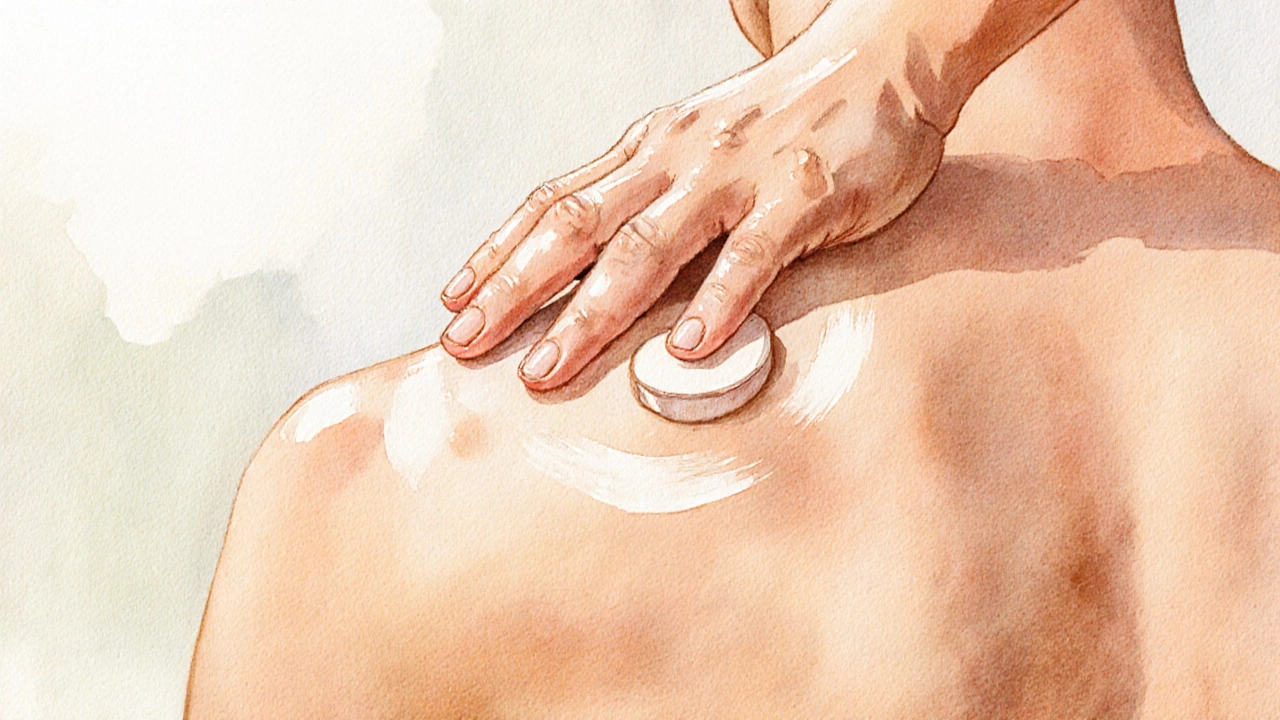Key Takeaways
- Ask for consent before you get cozy - it builds trust and makes the moment smoother.
- Start with low‑pressure zones like the back, shoulders, and hips; they’re safe and soothing.
- Read his body language: relaxed muscles, leaning in, or soft sighs signal he’s enjoying the touch.
- Avoid overly sensitive spots (e.g., stomach or lower back) unless you know he’s comfortable with them.
- Gradually increase pressure and intimacy based on his responses, not your own agenda.
Understanding Cuddling
Cuddling is a close‑body activity where two people share warmth, comfort, and gentle touch. It often serves as a bridge between friendship and romance, letting partners feel safe while their bodies release oxytocin, the so‑called "bonding hormone." When done right, cuddling can deepen trust, lower stress, and set the stage for deeper intimacy.
Because cuddling is low‑key, the way you place your hands matters more than you might think. A well‑timed stroke can turn a simple snuggle into a moment that makes both partners feel seen and desired.
Consent & Communication
Before you start exploring, make sure you have clear consent. This isn’t a formal contract; it’s a simple, respectful check‑in. You can say, "Is it okay if I put my hand here?" or use a playful, "Mind if I cuddle a bit closer?" The tone matters - keep it light and ask in a way that gives him an easy out.
Consent isn’t a one‑time thing. Watch for verbal cues ("yeah," "sure," "that feels good") and non‑verbal signals like a relaxed sigh or a gentle squeeze. If you notice any tension, pull back and ask again.

Safe & Pleasant Touch Zones
Here’s a quick rundown of the spots most guys find comforting when you’re cuddling. Think of them as the "go‑to" areas that rarely cause discomfort.
- Upper Back & Shoulder Blade - A gentle glide here mimics a soothing massage and is easy to reach.
- Neck & Nape - Light fingertips or a soft kiss can be very intimate, but keep the pressure light.
- Side Ribcage (near the armpit) - Light tracing can be ticklish and pleasant.
- Hips & Lower Back - A slow, steady hand placement feels grounding.
- Forearm & Wrist - These are natural spots if you’re holding hands or interlacing fingers.
- Scalp / Hair - A lazy run of fingers through hair or a soft scalp rub can be incredibly relaxing.
Zones that often feel too sensitive unless you know his preferences include the stomach, lower abdomen, and inner thigh. These areas can trigger a protective reflex if he isn’t ready.
| Best Zones | Why They Work | Zones to Approach Cautiously | Potential Issues |
|---|---|---|---|
| Upper back & shoulder | Provides soothing pressure, easy to reach | Stomach | Can feel invasive, may cause discomfort |
| Neck & nape | Highly sensitive, creates intimacy | Lower back (if tense) | May aggravate existing soreness |
| Hip & lower back | Grounds the body, encourages closeness | Inner thigh | Often too erotic for casual cuddling |
| Forearm & wrist | Natural extension of hand‑holding | Chest (if not well‑established) | Can feel overly intimate too soon |
How to Touch: Techniques & Tips
Once you’ve picked a zone, consider the following techniques:
- Light Pressure: Use the pads of your fingers, not the tips. A feather‑light stroke over the upper back feels relaxing.
- Circular Motions: Small circles on the shoulder blade can mimic a massage without being too invasive.
- Steady Hold: For hips or lower back, a calm, firm hand provides a sense of security.
- Playful Tug: A gentle pull on the forearm or wrist can add a hint of flirtation.
- Scalp Scratch: Lightly running your nails through his hair or tracing the scalp releases tension.
Vary the speed based on his reactions. If he sighs or leans into your touch, you’re on the right track. If he tenses or pulls away, ease up.
Reading His Body Language
Knowing where to place your hand is only half the battle; interpreting the response is the other half. Look for these signs:
- Relaxed Muscles: Shoulders drop, back arches slightly - he’s enjoying the contact.
- Lean In: If he scoots closer, it’s a green light to explore further.
- Soft Sighs or Smiles: Audible cues that the touch feels good.
- Reciprocating Touch: He mirrors your hand placement or gently rubs your back.
- Pull‑Back or Tension: Indicates he’s uncomfortable - pause and ask.
Body Language is a reliable feedback loop; it’s less about reading a script and more about staying present.

Common Mistakes to Avoid
Even well‑intentioned cuddlers can slip up. Here are pitfalls to watch for:
- Jumping to Sensitive Areas: Going straight for the inner thigh or chest without building trust can feel intrusive.
- Uneven Pressure: Too hard or too light can break the relaxed vibe.
- Ignoring Signals: If he pulls away, keep pressing on can turn a sweet moment sour.
- Over‑talking: Constant chatter can distract from the tactile connection. Let the silence breathe.
- One‑Sided Touch: Make sure both partners receive physical attention, not just you.
Building Intimacy Beyond Cuddling
When cuddling feels natural, you can use it as a springboard to deeper intimacy. Try these next steps:
- Introduce light kissing on the neck after a few minutes of steady back rubs.
- Shift the position to a spooning angle, giving you more surface area to explore.
- Share a whispered compliment or a soft confession - words paired with touch amplify connection.
- Gradually increase pressure on the hips or lower back if he seems comfortable, moving toward more sensual zones.
Remember, every couple moves at their own pace. The goal isn’t to rush but to let the moment evolve naturally.
Frequently Asked Questions
What’s the safest first place to put my hand when cuddling?
Start with the upper back or shoulder blade. Light strokes there feel soothing and rarely feel invasive.
How do I know if he’s comfortable with my touch?
Watch for relaxed muscles, leaning in, soft sighs, or a reciprocal rub. If he tenses or pulls away, ask if everything’s okay.
Is it okay to touch his chest during cuddling?
Only if you’ve established a comfortable level of intimacy. For most casual cuddle sessions, stick to the back, hips, and shoulders first.
What if he doesn’t respond verbally?
Non‑verbal cues matter. A relaxed sigh, a gentle squeeze, or leaning closer all signal approval. When in doubt, ask a simple "Does this feel good?"
Can I use the same touch techniques with a new partner?
Yes, but start slower. New partners may need more reassurance and clear consent before you explore deeper zones.






